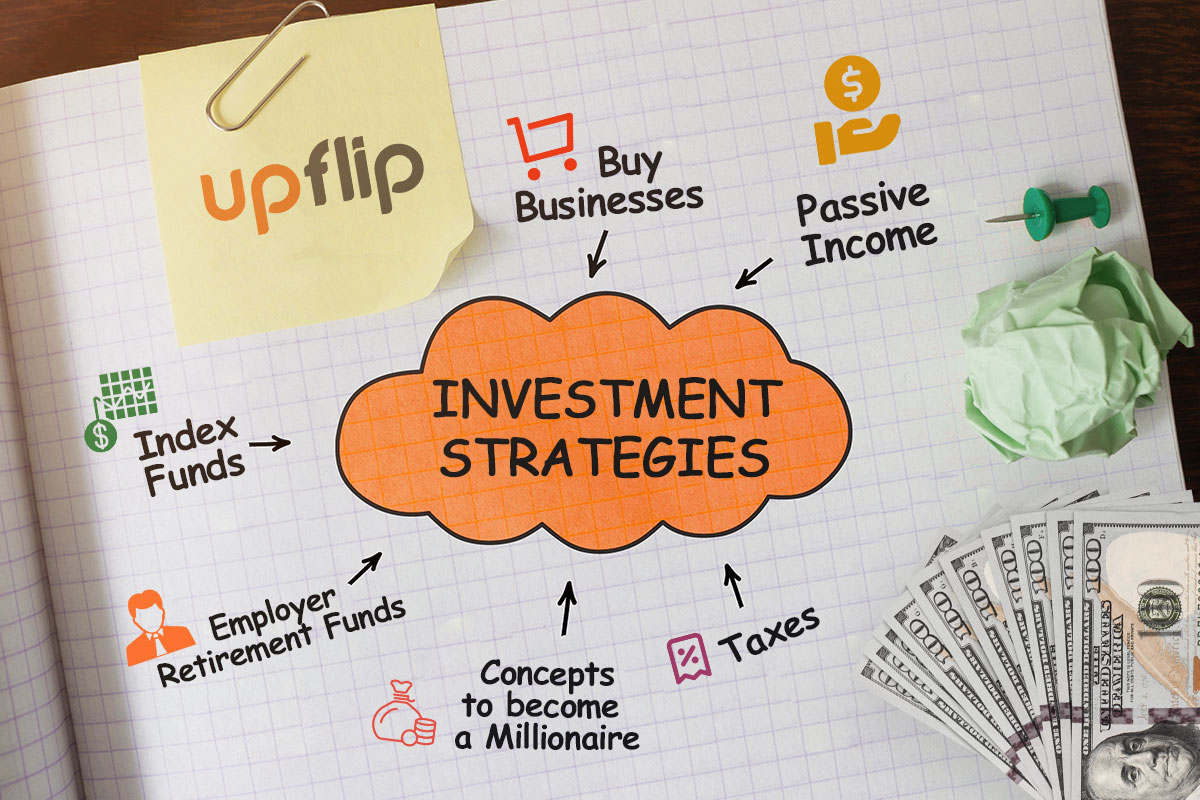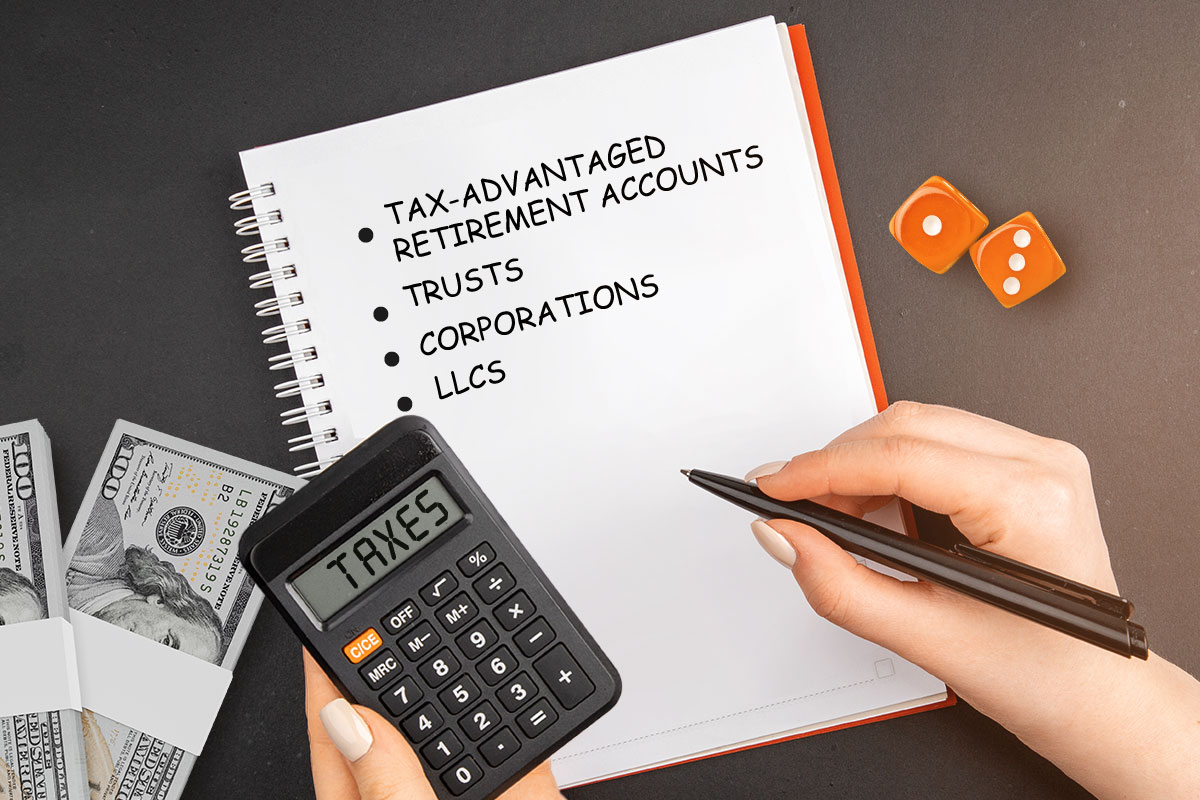Making a million dollars isn’t hard. You’ll probably make that much or more in your lifetime, but that doesn’t mean you’ll develop wealth.
For those who want to know how to become a millionaire, just spend less than you make. It’s that simple!
We talked to Todd “TJ” Johnson, The Millionaire Mentor. TJ grew up poor and wanted to get out of South Carolina.
He started cutting grass and delivering newspapers as a kid just to feed himself, then joined the Air Force at 17. He also went to school to study computer science.
When he left the military, he asked for the same salary as the highest-paid military member. People laughed at him, but TJ didn’t let that discourage him. He asked what skills he needed to be worth it, then developed those skills.
In this blog, TJ shares some of his personal tips and insights to help you follow in his footsteps. You can either keep reading or click any of the links below to jump to the section that interests you:
- Millionaire Status Achieved: Todd “TJ” Johnson
- Disclaimer
- Strategy #1. Make Personal Finance Improvements
- Strategy #2. Start a Successful Business
- Strategy #3. Use Investment Accounts
- Strategy #4. Invest in Real Estate
- Strategy #5. Invest in New Markets Early
- Strategy #6. Generate Multiple Income Streams
- Concepts You Need to Understand to Become a Millionaire
- Wealth Building Questions
- Share What Being Rich Means to You
Millionaire Status Achieved: Todd “TJ” Johnson
While learning new skills to justify a higher salary, Todd also started investing in industries such as construction, hospitality, marketing, publishing, retail, and IT.
Today, he’s built a net worth of over $50 million dollars and now helps other people achieve millionaire status. Throughout this blog, keep this advice from TJ in mind:
Find out more in our interview with Todd:
Disclaimer
I am not a financial advisor. The opinions expressed in this blog are based on a layman’s perspective of personal finance, compounding interest, and other topics. Please choose investments carefully with the assistance of a financial advisor or attorney when starting a business.
Always remember that past performance doesn’t predict future results. Making financial decisions without a thorough analysis of the opportunities can lead to financial chaos.
Strategy #1. Make Personal Finance Improvements
You’ll need to learn about personal finance, define your financial goals, and make investments to start becoming a millionaire. The following suggestions are some of the ways of building wealth you may want to consider. Many of them only require you to stay disciplined.
Get a Full-Time Job or Start a Business
You have to make money to reach millionaire status. If you don’t already have a job or a business, it’s time to get started.
It’s hard to benefit from many wealth-building strategies if you don’t already have money. Sure, you could win the lottery, borrow money, or win at a casino, but all those ideas are putting your financial independence into someone else’s hands.
Start Saving Early
One of the keys to becoming a millionaire is to start saving money early. The younger you start saving money, the more it has time to grow.
On average, the stock market grows approximately 10% per year. If you start saving money at 16, that’s 49 years of compounding.
At that rate, $1 would turn into $106.72 by the time you’re 65. That means saving less than $10,000 at 16 would turn into a million by the time you retire. Meanwhile, if you wait until 30, you would need $35,600 to turn it into a million by the time you retire.
The average American saves 4.4% of their household income, but experts recommend saving 15% or more.
Avoid Overspending
There are benchmarks about how much you should expect to spend on everything. You want to spend less than those guidelines to make it easier to save money and invest in the future. Some of the common benchmarks are:
- Housing: 28%
- Taxes: 14.9% + 7.65% for employees (15.5% for self employed)
- Savings: 15%
That means your remaining disposable income is 34.45% of your gross pay. That has to cover your utilities, food, clothes, and entertainment. Make sure you aren’t paying for subscriptions you don’t use or overextending yourself by partying or eating out all the time.
Develop Your Skills
There are a lot of skills people are willing to pay good money for. Find skills that interest you and master them. According to the U.S. News & World Report, the majority of the highest-paying skills require a master’s degree or doctorate.
Tech, marketing, and financial consulting are some of the skills that only require a bachelor’s degree. However, any field can be lucrative if you find an efficient way to do it and start your own business.
Save 15% of Your Income

We discussed saving early and the impact it has on your net worth, but saving at least 15% of your money will make it easier to become a millionaire.
Someone who makes $30K and saves 15% ($4,500) would have $1.22M after 35 years with an annual return of 10%. If you bump the savings up to 20%, you’d have an extra $400K.
Get Out of Debt
Debt eats away at your wealth every compounding period. If you can’t make more off the money than the debt costs you, find a way to get rid of the debt. It will give you more money to invest in the long run.
Credit card debt and high-risk loans tend to be the worst types of debt to hold. You should also remember that cars are depreciating assets, so borrowing money to own one is likely a poor investment. The exception is if the vehicle is necessary for your business or work.
Reduce Expenses
We all have frivolous spending that we can cut out. Look at all the expenses in your life. Ask yourself:
- Are these expenses necessary?
- Do they add value to my life?
If the answer to both is no, get rid of them. Don’t forget to look at things like monthly subscriptions and rates that are charged based on your credit score. You can often save money by refinancing or switching lenders for things like insurance.
Even extending the replacement cycle of your phone can reduce your spending by up to $100 per month.
Work With a Financial Advisor
Financial advisors are professionals who help people achieve their goals by analyzing different strategies and recommending the ones that will be most beneficial to each client.
You need to make sure that the person advising you is bound by a fiduciary responsibility to provide the advice that’s best for you. For instance, if two funds have identical performance, they should suggest the one with lower fees even if higher fees would be better for their organization.
Make sure to ask potential financial advisors questions such as:
- Are you bound by fiduciary standards?
- Will you review my positions and provide a financial plan?
- How do you make money?
Strategy #2. Start a Successful Business

The Federal Reserve shows that people with net worths between $553,100 and $11,640,00 attribute 9% of their wealth to owning a business. The top 1% have 41% of their wealth in small businesses.
If you’re not sure how to start a business, consider signing up for the UpFlip Academy to learn about different business models from successful entrepreneurs.
Strategy #3. Use Investment Accounts
The stock market accounts for 30% to 32% of millionaires’ wealth. You can make managing a stock portfolio easy by investing in an exchange-traded fund like SPY that’s meant to match the S&P 500.
Once you reach more than $320K in the stock market, you might want to spread the funds to other investment areas to diversify.
Strategy #4. Invest in Real Estate

Real estate plays a major role in wealth development:
- Lowest 25% of net worths: These individuals own no real estate and have no mortgage.
- Second quartile: People in this group earn below the average but aren’t impoverished. They have 152% of their net worth in real estate but owe 93% of that in mortgages.
- Above average: These individuals are wealthy but haven’t achieved millionaire status. They have 103% of their net worth in real estate and owe 36% to mortgages.
- Millionaires: Millionaires tend to have 62% of their net worth in real estate but owe 14% to mortgages.
- Top 1%: These individuals only have 23% of their net worth in real estate with 3% going to mortgages.
Strategy #5. Invest in New Markets Early

Early seed-round investors tend to get the best return on investment. By providing funding before stocks are offered publicly, you can gain outsized returns or lose it all.
Jeff Bezos put $250K into Google in 1998 before its initial public offering (IPO). After the IPO, Google was worth $280M, which means he multiplied his money by 1,120 times when it went live. If he held his investment until today, those shares are worth over $6B.
Investing in new, world-changing tech like major AI players can easily create those kinds of returns in the future, but those businesses are high risk, high reward. That means some of them will inevitably fail.
Strategy #6. Generate Multiple Income Streams
You don’t want to put all your chickens into one basket. When you have one of your strategies or businesses solidly generating profits with minimal involvement from you, it’s time to pursue other income streams.
You might want to consider buying businesses, acquiring more real estate, or starting new investment accounts.
Concepts You Need to Understand to Become a Millionaire

If you want to retire early or provide for your loved ones when you die, you have to treat money like a game. It’s just a means to an end.
Three of the most important strategies you can use are:
- Compound interest
- Diversification
- Tax advantages
What Is Compound Interest?
Compound interest is reinvested to create more gains. Want to know how I figured out that you’d need to invest $12,600 monthly at 10% interest for 5 years to become a millionaire?
I used the compound interest calculator I created to calculate the figure. Check out the table below to see the math by year:
| Year | Starting Net Worth | Amount Invested | Compounding rate | Ending Net Worth |
| 0 | 0 | $151,200 | 10% | $166,320 |
| 1 | $151,200 | $151,200 | 10% | $349,272 |
| 2 | $349,272$ | $151,200 | 10% | $550,519.2 |
| 3 | $550,519.2 | $151,200 | 10% | $771,891.12 |
| 4 | $771,891.12 | $151,200 | 10% | $1,015,400.23 |
| 5 | $1,015,400.23 | $151,200 | 10% | $1,283,260.25 |
Compounding can be done with any form of cash flow. You just have to put the money into something that will earn returns that beat inflation.
Wasting your time putting more money in a savings account that earns less than 1% per month will never get you to your financial goals. You’ll lose money yearly if you make less than inflation on your returns.
Does this mean you should find the highest return and “ape” into it like crypto bros? No, please don’t!
Diversification Protects You
Do you remember companies like Enron? How about people like Bernie Madoff? These famous scammers helped millions of people become rich, then went bankrupt—along with the many investors they ripped off.
During my finance courses for my MBA, one of the lectures was about why the Dow Jones Industrial Average uses 30 stocks to simulate the returns of the entire stock market.
Using statistical analysis (which I will spare you from for the sake of readability), they found that you could accurately model the performance of the entire stock market with 30 well-chosen stocks. This strategy saves a lot of money over buying every stock, and the difference in risk was less than 1%.
You can also use diversification to become a millionaire by investing in a combination of assets like:
- Stocks
- Options
- Bonds
- Crypto
- Real estate
If you have a good amount of diversification, you’re unlikely to lose over the long term, but most financial advisors still recommend thinking about investing over a 10-year time frame.
There are other strategies you’ll want to use as you build more wealth. You’ll learn about them in the next section.
Taxes Are Written to Be Gamed

In today’s society, a million dollars isn’t that much, but to become a millionaire, you need to learn to play legally within the system. There are numerous financial instruments the wealthy use to increase and protect their financial freedom and build wealth:
- Tax-advantaged retirement accounts
- Trusts
- Corporations
- LLCs
Let’s look at some of the ways you can use these to accelerate your journey toward making a million dollars.
Tax-Advantaged Retirement Accounts
You’re probably familiar with retirement accounts like a 401(k), individual retirement account (IRA), or Roth IRA. However, did you know there are over 16 types of retirement plans? Some, like a simplified employee pension, allow up to 25% of an employee’s salary to be paid to their IRA without a matching contribution.
Retirement accounts can greatly enhance your personal financial situation. While 401(k)s and traditional IRAs reduce your current tax liabilities, you pay taxes on the withdrawal.
Meanwhile, with a Roth IRA, you pay taxes on the front end and collect the withdrawals tax free. Depending on your current tax rate and your tax rate when you collect, you can pay fewer taxes over the course of your life.
Trusts
You can use a trust to protect your money when you die. These contracts prevent probate because they specify how the money is distributed.
If you want to pass on more money to people who are at least 37.5 years younger than you, it’s common to use an irrevocable life insurance trust. A financial planner can help you set up this type of trust to protect your generational wealth.
Corporations
Corporations have a 15% to 21% tax rate, while personal income tax can be as high as 37%. If you own a business, dividend payments can be used to reduce your overall taxable income.
Plus, corporations get a lot of deductions that individuals don’t. Filing your taxes as a corporation rather than an individual can help you save significantly come tax time.
Limited Liability Companies
Most millionaires have multiple small business ventures protected under separate limited liability companies. Doing so prevents one investment from being harmed by another investment in the case of a liability claim. This makes becoming a millionaire easier because one failure won’t destroy your other businesses or your pursuit to build wealth.
Wealth Building Questions
How to become a millionaire by 30
If someone wants to be a millionaire by 30, they’ll need to invest money routinely. How much you need to invest varies based on your age and the percent on your returns.
We’ve used some common ages people start investing to help you estimate the amount you should invest monthly to have a million dollars by age 30. All figures assume the long-term stock market average of 10.5%.
| Age of First Investment | Number of Years Until Age 30 | Monthly Investment to Have $1 Million by Age 30 | Reason |
| Birth |
30 |
$439.92 | Parents investing for kids |
| 5 | 25 | $750.32 | Parents investing for kids after kindergarten |
| 16 | 14 | $2,742.61 | Legal working age |
| 18 | 12 | $3,610.76 | Transition to adulthood |
| 21 | 9 | $5,737.71 | After college |
| 22 | 8 | $6,832.87 | After college |
| 25 | 5 | $12,904.78 | After grad school |
How to become a millionaire in 10 years
You’ll need to invest $4,874.42 monthly and earn a 10.5% return on your investment to become a millionaire in 10 years.
How to become a millionaire in 5 years

You’ll need to invest $12,904.78 per month with a 10.5% average return to become rich within five years. This is a fairly short time frame for most investments. If you want to become rich fast, TJ recommends buying an existing business without putting money down.
TJ also suggests learning about marketing. He explained:
How to become a millionaire overnight
The easiest way to become a millionaire with no money is to go buy a lottery ticket and hope you win. You probably won’t get rich this way, but like Mark Cuban says:
Can I make a million dollars in a year?
Achieving the goal of having a million-dollar net worth in a year would mean investing whatever money you have now into ideas that are likely to make a million dollars fast. Most people lose money with get-rich-quick schemes.
Share What Being Rich Means to You
You now know how to become a millionaire with no money. Are you still asking yourself, “How can I get rich?” If so, look into what it takes to start your own business.
Consider signing up for a free trial with the UpFlip Academy. You’ll be able to learn from expert entrepreneurs and look for inspiration in our business ideas database.
Why do you want to become a millionaire, and what would you do to get there? Let us know in the comments below.





